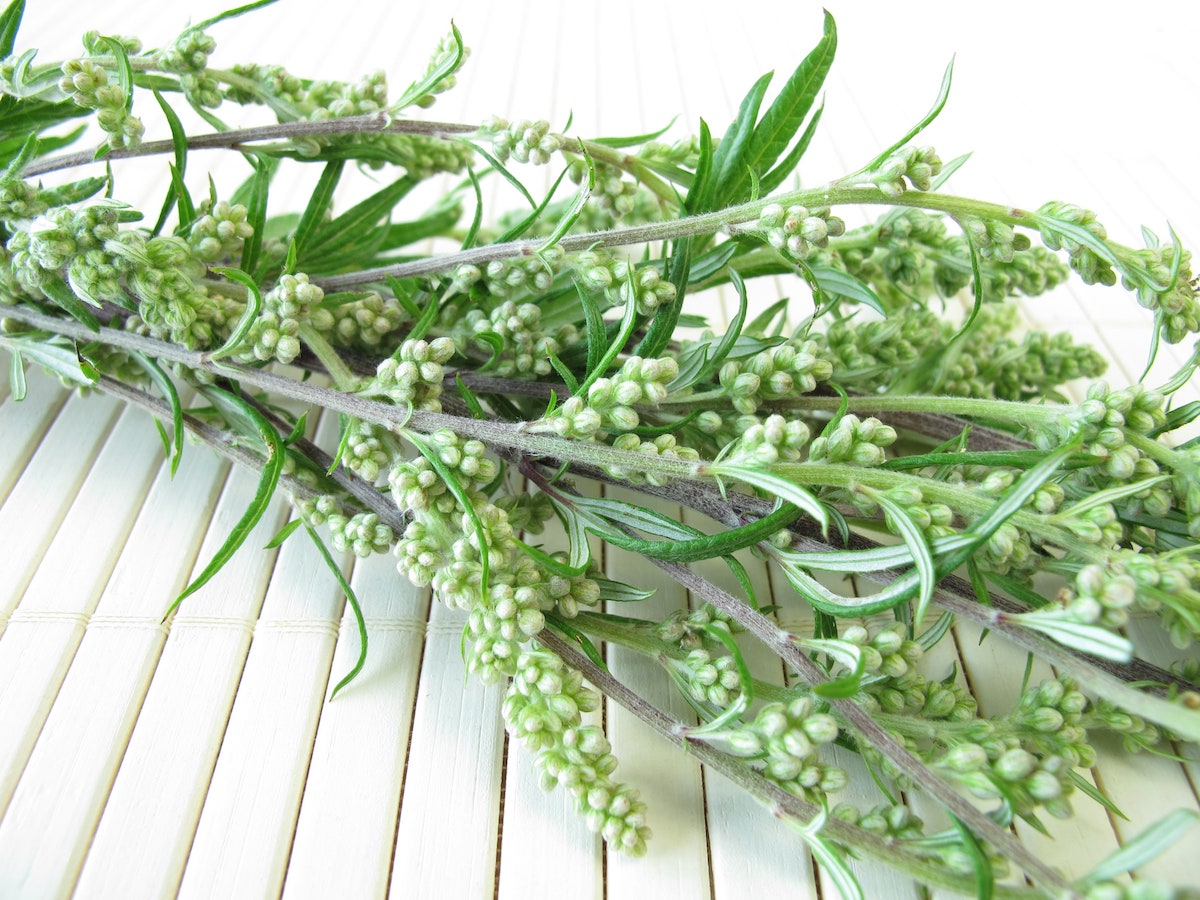
Written by Regan Crisp
Cronewort, sailor’s tobacco, dream weed — a plant with many names, mugwort is steeped in herbal lore. Revered for its ability to enhance dreams, mugwort — like cannabis — is a plant open to interpretation. For some it’s a sacred guide, aiding in dreamwork and offering protection. For others it’s a gift of healing, offering relief from difficult ailments that don’t often find a cure.
Reminiscent of sage and a sister to wormwood, mugwort grows widely, but especially throughout England and Europe where its lineage of usage dates back to the druids. Pagans burned dried mugwort during rituals to purify space and protect themselves from negative forces. The Ancient Egyptians, Romans, and Native Americans also used mugwort, and though its uses varied, in all instances it was a plant of prestige.
 Mugwort has traditionally been brewed as a tea, smoked, or placed near the head during sleep. It contains thujone, the same component that gives wormwood (and thus absinthe) its psychoactive effects. Smoking mugwort is one way to experience its sedating, psychedelic side, though blended with other herbs it can be quite calming as well. Tea is the simplest way to test mugwort’s nighttime powers; one cup blended with lavender before bed will drift the user into potent sleep, with vivid and sometimes lucid dreams as the reward. The introduction of a mugwort pillow to the bedroom is said to ease restless sleep and detangle nightmares.
Mugwort has traditionally been brewed as a tea, smoked, or placed near the head during sleep. It contains thujone, the same component that gives wormwood (and thus absinthe) its psychoactive effects. Smoking mugwort is one way to experience its sedating, psychedelic side, though blended with other herbs it can be quite calming as well. Tea is the simplest way to test mugwort’s nighttime powers; one cup blended with lavender before bed will drift the user into potent sleep, with vivid and sometimes lucid dreams as the reward. The introduction of a mugwort pillow to the bedroom is said to ease restless sleep and detangle nightmares.
Though it’s at home in the realm of witchcraft and visioning, mugwort has many practical applications as well. Like other bitter herbs such as gentian or dandelion, mugwort is beneficial for easing digestion and intestinal problems, helping the body to produce the hydrochloric acid needed to regulate heartburn and other upper GI issues. The famous 17th century herbalist Nicholas Culpeper wrote that mugwort “is excellent for all disorders of the stomach, prevents sickness after meals and creates an appetite.”
Mugwort is considered a nervine (soothing to the nervous system) and an antispasmodic. At one point it was used commonly to treat epilepsy. Some use it still for headaches and muscle spasms, others to soothe stress and treat insomnia.
Women have used mugwort for centuries to accelerate and regulate their cycles, so it is not recommended for pregnant or nursing mothers or those with ragweed allergies, but an infusion of mugwort is gentle medicine to most. During World War II, when Camellia sinensis, used to make tea was scarce in England, mugwort stepped in as the brew of choice. Mugwort’s bitterness added flavor in beer brewing before hops became the standard. Sailors out at sea that ran out of or couldn’t afford tobacco smoked mugwort, which grows plentifully like a weed (it’s a member of the daisy family). Mugwort can even be used topically as an insect repellant, and as a natural insecticide on plants.
Perhaps the simplest way to absorb the magic side of of mugwort is to burn it. A smudge stick made from mugwort, just like one made from sage, can be lit to clear out stale air and purify any space needing refreshing. Many cultures counted on mugwort as a protective herb; it was often burned to sanctify a safe space for practicing magic or communing with spirits, and carried along the road to keep mischief-makers at bay.
Like cannabis, mugwort leans towards the intangible; its effects on the mind and body are subtle yet powerful, lending it the position of sacred plant to many. Whether you carry a bundle of mugwort for luck, steep it with your favorite after-dinner herbs to settle your stomach, or decide to inhale and blast off into mystical mugwort’s realm, it’s comforting knowing our ancestors might have, too.



Leave a Reply